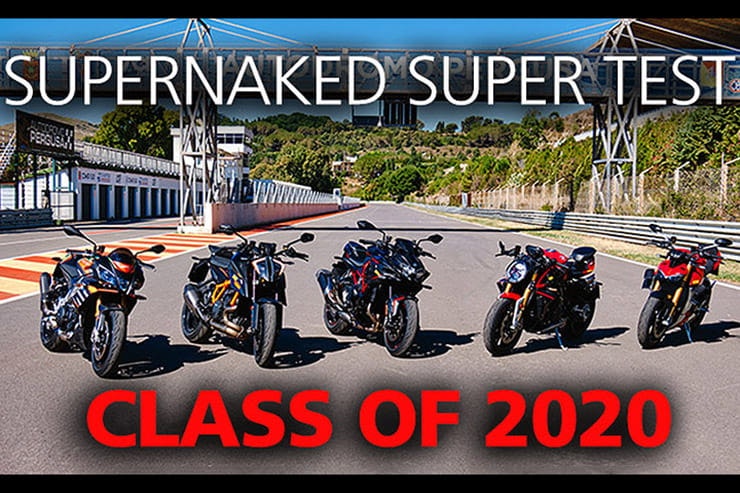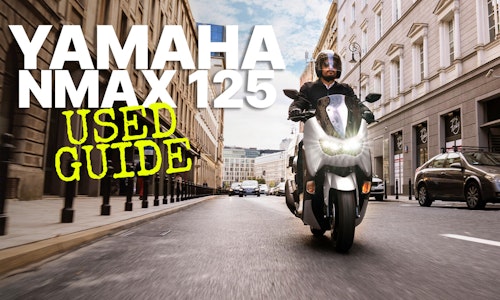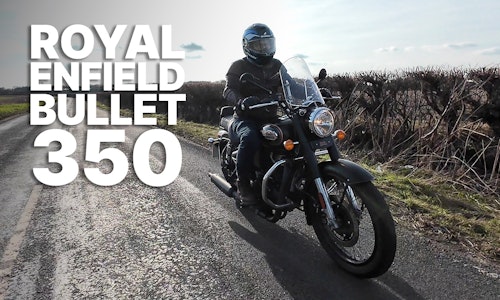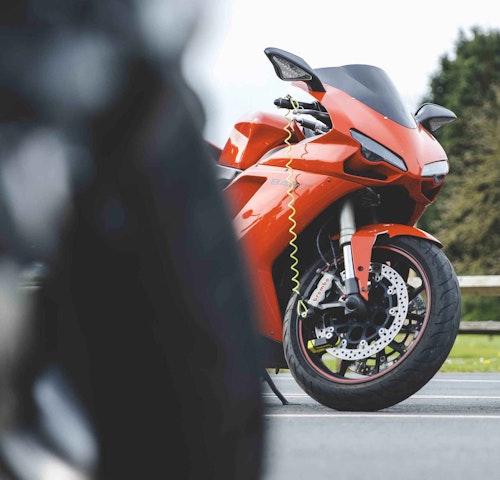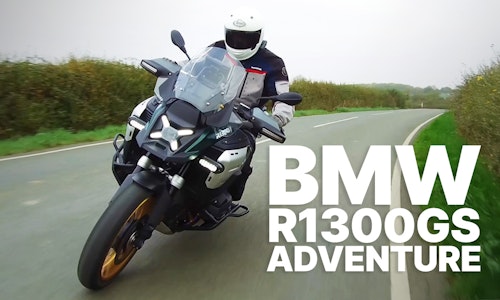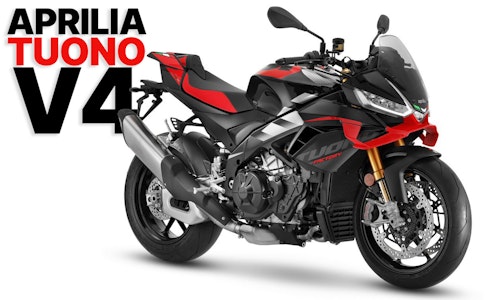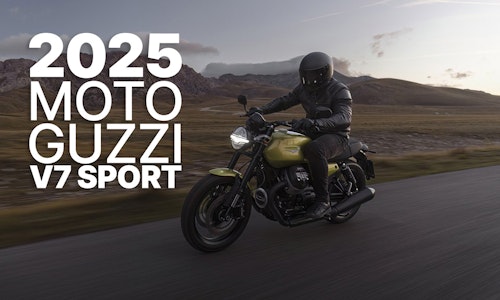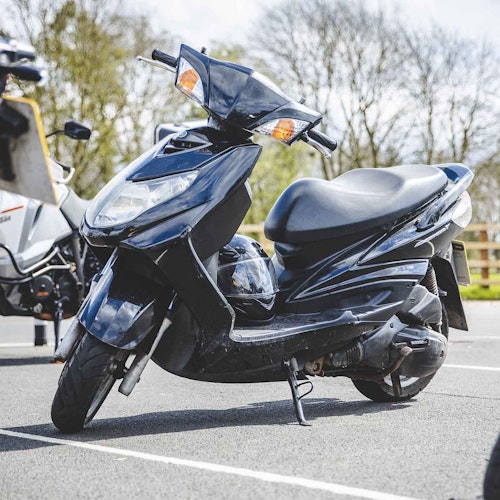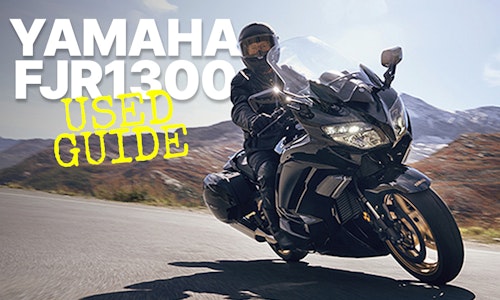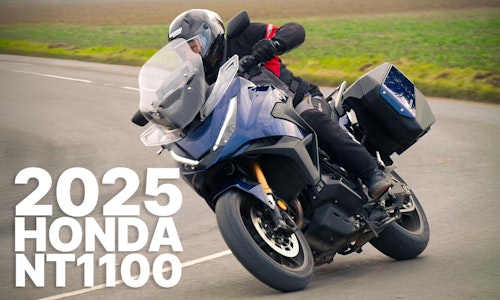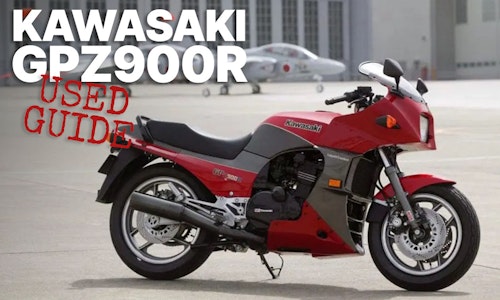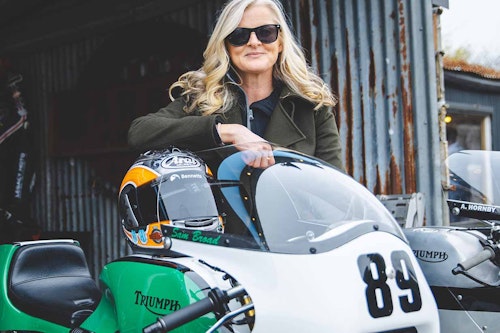Which is the best 2020 Supernaked? | Kawasaki, MV Agusta, KTM, Ducati and Aprilia
BikeSocial Road Tester
27.08.2020
This is arguably the most highly anticipated group test of 2020. The super-naked market is booming with an onslaught of new models for 2020, with 200bhp – enough to win world championships a few years ago – now the norm.
They’re not all about power either. These highly-spec’d and unfaired exotica are not only easy on the eye, each one iconic in their own way, but also dripping in the latest technology, from sophisticated rider aids to aerodynamic wings and even a supercharger.
We’ve selected the most desirable, fastest and most powerful production nakeds available right now – all of which are either new or updated for 2020: the MV Brutale 1000RR, Ducati Streetfighter V4S, Aprilia Tuono V4 1100 Factory, KTM 1290 Super Duke R, and Kawasaki ZH2. Over £90,000 worth of machinery and nearly 1000bhp.
To help us find a winner, we’ve enlisted Pirelli, who not only provided us with control tyres for the road and track, but also the use of their stunning Pergusa racetrack in Sicily. But we’re not just concentrating on laps times, we’ll cover 180-miles on the equally stunning roads around Mount Etna, plus we will weigh each machine and put them all on the dyno.
Which is the best 2020 Hypernaked?
Aprilia vs Ducati vs Kawasaki vs KTM vs MV Agusta on road and track
On the Track...
All bikes are fitted with the same Pirelli Diablo Superbike Slick (SC3) tyres, and ridden by the same rider in the same conditions
| Ducati Streetfighter V4S | Aprilia Tuono V4 1100 Factory | MV Agusta Brutale 1000RR | KTM 1290 Super Duke R | Kawasaki ZH2 | |
|---|---|---|---|---|---|
| Lap time | 1'48.52" | 1'49.36" | 1'49.90" | 1'51.04" | 1'56.56" |
| Top speed on track | 162mph (262kph) | 157mph (253kph) | 159mph (257kph) | 155mph (249kph) | 153mph (246kph) |
| Lean angle (l/r) | 53.3°/53.8° | 49.9°/47.2° | 50.8°/47.1° | 52°/47.3° | 46.9°/45.2° |
| Roll-on: 37-112mph (60-180kph) | 4.93s | 5.59s | 5.55s | 5.60s | 5.33s |
Kawasaki Z H2
You could argue the Kawasaki shouldn’t have been included but it is a supercharged super-naked and was launched in the USA on a race track (as well as road) and, to be honest, we just wanted to see how fast it really was. However, as the lap times show, the Kawasaki was outclassed against much sportier competition.
As soon as you leave pit-lane you’re aware it’s a road bike and not a naked bike derived from a race bike like some of the competition. At a decent track day pace, it’s forgiving and easy to manage for such a powerful big bike and the supercharger’s ‘chirp’ is lovely. Grunt is impressive too; it really drives hard out of the second gear chicanes. With Pirelli slicks finding endless grip you can get on the power reasonably early and drive hard down the next straight.
The data confirms this: 5.33 seconds from 60-180kph, the second quickest bike in this sector. Top speed was down despite the supercharged power, but not bad considering the bike’s weight (230kg measured) and un-aerodynamic bulk. 152mph (true) is still quick enough for most.
You can’t trim the rider aids as much as the competition but they’re more than adequate on track, so few complaints there. You only discover issues on the Kawasaki when you start to push for a lap time. Ground clearance soon becomes a limit (as you can see by the lean angle data) and is the poorest of the bunch. Then the rear shock starts to give up the fight. I had a huge moment on the way into one of the tighter corners, the rear chattering as the rear shock lost the plot. We did add some pre-load to increase the ground clearance and aid the shock, but it still wasn’t up for the challenge.
The braking was strong considering the bike’s weight, with no fading and no alarming intervention from the ABS but the Kawasaki’s excessive bulk was noticeable during fast direction changes. Again, this wouldn’t be an issue at normal track day speeds, but it was when pushing for a lap time. Lose some weight of the Kawasaki, fit a quality aftermarket rear shock and it wouldn’t be a half bad track tool.
KTM 1290 Super Duke R
On standard settings, the KTM developed a weave at high speed, which is why we quickly converted the WP fully adjustable set up to race settings. Like the Kawasaki, the KTM has manually adjustable suspension, not semi-active like the Italians. But this isn’t a negative; far from it. The track settings for the KTM are under the seat (a very neat touch) and it only takes a few rewarding minutes to dial in the recommended setting which make a huge difference, and well worth doing if you intend to ride on track.
At Pergusa, the KTM was the easiest bike to ride by far, unlike the Ducati which was hard work. Its V-twin power is comparatively lazy, so you don’t have to be accurate with the throttle at a specific rpm; just dial in that massive mid-range torque and start accelerating early. It’s a doddle to ride at speed.
I loved the KTM on track. Its steering, turn-in and accuracy were probably the best of the bunch, inch perfect apex after apex. You can trail the powerful brakes into the turn (cornering ABS isn’t intrusive,) while mid-corner there is loads of feel and grip which boosts confidence. The KTM recorded the second highest lean angle, too, a seriously radical 52.5 degrees.
You can get on the power early coming out of a turn – the rider aids set to a minimum are not intrusive – while the throttle connection is as sweet as the Sicilian mountain air. With the 1290R I was always on the power the earliest; it would get a real jump on the initial drive when the bike is still cranked over.
In terms of lap times, it does appear a little disappointing, only beating the heavy Kawasaki position and 1.5 seconds slower than the MV in third position. The handing was superb but the KTM was let down by its comparatively slow-revving motor, especially in the taller gears of 5th and 6th. It was the slowest from 60-180kph, and the second slowest down the straight, 10kph slower than the MV.
MV Agusta Brutale 1000RR
All the credentials were there for the MV to take victory: a quoted 205bhp from its 998cc titanium-rodded engine, and lighter than ever before with new advanced rider aids. The Brutale is based on the F4 superbike and historically MV have always been track focused but it was just pipped into second position by the Aprilia.
The MV has more tested power than the Aprilia and shares the same tested weight (186kg), and if you look at the data closely it has a higher top speed than the Aprilia, leans over further and takes less time accelerating between 60-180kph, so why didn’t it beat its V4 Italian counterpart? Sadly, at race pace it was down to the brakes. On the track the ABS is too intrusive, and the re-intervention of the brakes is too slow. This, mixed with inconsistency, didn’t give any confidence when we were really pushing for a lap time. Sometimes the intervention was distractingly noticeable which made me run way too deep into the turn. Yet on other occasions it wasn’t too bad though not on par with the others, including the heavy Kawasaki. Yes, at track day speeds the braking was fine but with slicks fitted and the lap time to chase they were the worst of the bunch. With better ABS, the MV would have lapped quicker than the Aprilia.
The rest of the bike comes together on track, the best compliment I can bestow is that it feels like a race bike with the bodywork removed. The steering is pin-sharp and accurate, the dropped down bars giving a racy feel and allowing a proper tuck on the straight with your arse up against the rear seat… it’s the best of the bunch at high speeds. And ABS aside, the rider aids electronics are strong too with no holding back from the traction control. Meanwhile, that engine is a peach.
MV have squeezed every last horsepower from the 998cc inline-four with new and lighter internals like titanium rods and, boy, now it loves to scream. Below 8000rpm there’s not a lot going on but above that, wow, it just keeps revving and propelling you forward. Even in top gear the power didn’t seem to tail off, it just kept accelerating. A truly exciting ride.
Aprilia Tuono V4 1100 Factory
Before the test, I thought the Aprilia would be outclassed. It was updated in 2019, with new semi-active suspension from Öhlins, but it is essentially the 2015 bike (which is when it first jumped up to 1100cc capacity). On the dyno the Aprilia recorded a true 157bhp, which isn’t bad, but down on the competition. I thought this comparatively ‘old’ model with the least power would struggle, especially at the track – but I was very wrong.
The fuelling is excellent, the best of the bunch, which allows you to dial in the power with precision. The clutchless gear changes are also perfect, again the best of the group. The sound, the way the V4 revs, are lovely – like a fine wine the Tuono has matured into an excellent super naked.
When you wind up the pace to push for a lap time, the Aprilia is hard to criticise. The braking is consistent and excellent, and you wouldn’t know it has ABS. Even when braking devilishly late the Brembo stoppers show no sign of fading. Corner speed is impressive, ground clearance isn’t an issue and the wide, relaxed riding position allows you to throw the bike around with relative ease. The chassis is excellent too, the feedback forensic, and only the KTM Super Duke has more accurate steering. I didn’t think the Aprilia would perform this well, yet it was far easier than the MV and Ducati to ride at speed.
In race mode, the Öhlins semi-active suspension is on the soft side. There is a little understeer during heavy braking or when you’re rolling into a fast corner with a closed throttle which could be because the front is a little soft or the rear is fraction high and overextending.
Where the Aprilia lacked was in outright power, which sounds crazy on a bike with 157bhp at the back wheel, but both the Ducati and MV make over 175bhp. The Aprilia was the second slowest from 60-180kph, and to take second spot on track in this highly-contested category is impressive for bike with the least power – and demonstrates just how good the chassis is.
Ducati Streetfighter V4S
Our GPS data clearly shows the Ducati’s dominance on track. It was nearly a second quicker than its closest rival, the Tuono, 2.5 seconds faster than the KTM Super Duke, and it smoked the road biased Kawasaki by eight seconds, which is emphatic. After previously sampling the Ducati on track I knew it was fast, but I didn’t think it would be that far ahead.
In terms of top speeds, the MV ran the V4S close, but the rest were significantly behind, and for acceleration is was again another dominant victory for the Ducati with only the supercharged Kawasaki getting close. And finally, its lean angle (53.3 degrees) is huge and a clear leader with only the KTM getting close.
On the dyno, the Ducati and MV both recorded 175bhp, but the Ducati is backed up with far more torque than the MV, as you’d expect with a larger capacity V4. We weighed every bike on Pirelli’s scales and the Ducati came out the lightest (178kg) 20kg less than the KTM and 61kg lighter than the Kawasaki. Despite its supercharged power the Kawa never really stood a change against the Ducati on track given that it’s carrying the equivalent of a pillion.
On track, you really feel that power difference and lack of weight – it is so fast. The Ducati is on another level, especially in the fast stuff. When the KTM and Aprilia run out of puff the Ducati just keeps revving for another 2000rpm and more.
Like the engine, the brakes are phenomenally strong. The Ducati was the king of the late brakers and you can hold the lever up to the apex thanks to brilliant electronics and ABS. Electronics on the way out of corners are equally impressive and, despite that excessive power, you can trust the electronics and the grip generated by the Pirelli slick to for immense drive.
If I were to be picky, the Ducati is the hardest bike to ride fast because it’s very physical. You’re sat hight in the wind, bracing yourself against a 160mph wind blast and you can’t tuck out of the way. After five laps I was exhausted, whereas on the KTM I could have kept going all afternoon. Furthermore, the quick shifter is very sensitive, and I did miss the odd gear on occasion.
Each bike is good at one or two aspects: handling is the KTM’s forte, power and drive the Kawasaki’s, fuelling and ride quality belong to the Aprilia, racy stance and revs the MV’s. But equally they all have weaknesses like poor ABS or too much weight. On track the Ducati scored highly across the board and had few faults aside from the physicality of riding a superbike with no bodywork.
On the Road...
It’s on days like these that I have to remind myself this is a job and not a dream. In perfect conditions and on a stunning location in Sicily, in the foothills of Mount Etna, riding expensive exotic super-naked bikes with my Italian buddies… seriously, does it get much better than this? As we stopped half-way up the climb of Mount Etna surround by the volcanic landscape, I had to take a moment and reflect on the view. Aside from the smoky volcano in the background, just look at this collection of beauties.
Almost every manufacturer has chosen a different route, especially Kawasaki and KTM who haven’t stripped back a cutting-edge sports bike by removing the bodywork and instead built a purpose hyper-naked from the ground up.
Kawasaki’s obvious selling point is their unique supercharged in-line four-cylinder motor. It’s big and brash and the most road focused bike in our group, and thanks to the chirp of the supercharger, one of the most loved. The KTM is again built from the ground up because, simply put, the Austrians don’t have a superbike they can strip back now the old RC8 is gone. This arguably gives KTM an advantage as they are not inheriting any problems from a donated bike and can create a specific naked machine.
The three Italians were once-upon-a-time superbikes, the MV based on the F4 1000, the Streetfighter a Panigale and the Tuono an RSV. All three have opted for semi-active Öhlins suspension front and rear as opposed to manual suspension on the KTM and Kawasaki. The Ducati and Aprilia are the most similar, both using V4 engines, whereas the MV is a traditional high-revving titanium rodded inline four-cylinder. Interestingly, only MV and Ducati have incorporated aerodynamic wings to help with downforce to reduce wheelies, often a problem on powerful naked bikes.
When you compare styling, and obviously price, this is when the bikes differ hugely. They all stand out but for different reasons. The Kawasaki is arguably the most understated of the five – still of extremely high quality, but actually the cheapest bike on test at £15,149. The base KTM comes in at £15,699. It’s very individual, unmistakably a KTM and certainly eye-catching. Next in the price war is the Aprilia, which although attractive is starting to show its age and at £17,199 you wouldn’t think on looks alone it was the third most expensive bike on test. At £19,795 the Ducati is serious money, the lightest, most powerful bike on test and, as our track test proved, the fastest, but is it beautiful? Yes, it’s desirable, it says Ducati on the side after all, but remains nearly £5000 more than the Kawasaki. And finally, the very expensive MV, at an eye-watering £27,290. Personally, I love the look of the MV, but some of my more stylish Italian buddies were unsure. But as much as I like the unique, exotic style, I can’t defend it being £7000 more than the Ducati and, wait for it, £12,000 more than the Kawasaki.
But enough splitting hairs, and let’s forget about price and peak power for a moment to ride on the road, the environment they were designed to for.
Kawasaki Z H2
Even on the road it’s all about the engine, no normally aspirated engine gives you the same feeling the supercharged ZH2. The impeller with a 9.2 ratio impeller-to-crank speed, quick enough to break the sound barrier and create a brilliant chirping sound from around 6000rpm and upwards. It is most noticeable when you close the throttle at high rpm and becomes highly addictive. Even after a week of riding the ZH2 it was still making me smile. The immense power of the supercharger will even take experienced riders by surprise especially if they’ve not tasted supercharged power before. On the road it feels awesome, when the others are tapping back gears in search of peak power, you’ve already disappeared on the Kawasaki.
But it’s not just the supercharger. Flick into one of the softer rider modes and the Kawasaki is one of the easiest of the bunch to live with at low speeds. The throttle response is smooth and even a relatively new rider could jump on the ZH2, ride to the shops and back without feeling intimidated.
Obviously, with so much power Kawasaki had to heavily invest in up-to-date rider aids, and they have delivered. There are four rider modes – Sport, Road Rain, and a specific Rider mode which lets you pick and mix the rider aids and settings to your personal taste. You can even turn off the traction control if you’re brave enough and everything is clearly displayed on the latest TFT full-colour dash, one of the nicest and easy-to-use dashes of the bunch.
On track it’s weight, 230kg measured, felt considerably more than the others, and you feel this on the road, too, with changes in direction requiring more effort. But there is a plus side; the weight gives stability and security, and the ‘soft’ suspension which struggled on track gave a plush ride on the motorway. The ZH2 is certainly more road bike than race bikes – and it shows.
Ducati Streetfighter V4S
The dash and switchgear are down to personal taste but for me the new 5-inch colour screen is one of the best, plus it’s easy to use and navigate. You have optional modes (Street, Sport and Race) which change a plethora of riding aids and engine characteristics, and don’t forget the semi-active suspension which is always working and reacting to imperfections.
The Ducati surprised me because in Street mode it’s so easy to live with, not forgetting this is a bike which produces the most power and smoked the rest on track. I’d even go so far as to say a relatively inexperienced rider could jump on the V4S and, at low speeds at least, not feel intimidated, which is impressive for a bike that behaves like a Panigale at the top of the rev range in Race mode. The Streetfighter’s computer limits torque in 1st and 2nd gear, then adds some more in 3rd and 4th, then allows full-fat drive in 5th and 6th – which is why it works in both worlds.
If you do decide to flick into the racier modes, the Ducati is almost too fast for the road. It loves to rev, and it’d be too easy to double the national speed limit. The upgraded EVO-2 rider aids are incredible and keep you safe, and those wings improve stability at speed. My only criticism (like on track) was the overly sensitive quick shifter.
On the scales the Ducati is the lightest bike by some margin but on the road, it doesn’t feel it. The seat is 10mm higher than the Panigale, with more foam for comfort while the foot pegs are lower for added comfort. The wide bars and protruding wings give the feeling of a large bike, even though it isn’t.
The benefits the Öhlins semi-active suspension deliver on track work on the road too. It copes with undulations and bumps with composure and refinement. Ducati have done a superb job on a bike that not only sets the benchmark on track, but also works impeccably on the road.
Aprilia Tuono V4 1100 Factory
I don’t know why I’m being constantly surprised by the Aprilia; it has historically been a brilliant bike and just because there is now a raft of new models, nothing has changed – it is still brilliant. The person who developed the fuelling, throttle response and quick shifter needs to be given a huge star because it’s perfect. As soon as you throw a leg over the tall Tuono you feel at home, you feel connected with the bike despite its power and the fact it’s essentially a naked V4 race bike. It feels natural and easy to live with.
There isn’t a getting-to-know-you period with the Aprilia, you just get on and ride. The dash may not be as fancy as the Ducati’s or MV’s but it’s simple and easy to read. The switchgear looks a little dated but again it’s intuitive, so you don’t need to read the manual to work out what is happening. I love it.
The screaming V4 engine sounds lovely, quite different to the V4 Ducati motor and arguably the best of the bunch. It feels like there is no mechanical resistance and it just loves to rev but unlike the MV, another liquid revver, there is some usable torque lower down in the rev range.
The rider aids are perfect for the road. You can occasionally feel them working, controlling wheelies, which gives you confidence, yet they are not intrusive. The handling is sweet, the slightly soft feeling on track is reassuring and plush on the road especially in the softer road options. The Aprilia is ticking so many boxes, even the headlight fairing helps to deflect the windblast, meaning the Aprilia was the first choice when we had to embark on some motorway miles at speed. On the road, the Aprilia is hard to fault. It handles, stops, goes and is comfortable – shame it just doesn’t feel special like the MV or the chirping Kawasaki.
MV Brutale 1000RR
It always takes a while to get going on the MV as you always give it an admiring looks before throwing a leg over it. Yes, the others are attractive but for me this is the beauty queen. The dash is lovely, the best looking of bunch, but it’s too close to the rider and reflects the sun badly – shame.
That relatively small 998cc capacity and inherent engine characteristics of an in-line four-cylinder mean that maximum torque is the lowest of the bunch at 77.7ftlb at the highest rpm (10,800rpm). By comparison, the KTM makes peak torque at just over 8000rpm and more of it, 97.1ftlb. Below 6000rpm there isn’t a lot going on and doesn’t get properly running until 8000rpm. Yes, it will pull away cleanly from low in the rev range but compared to the others feels almost broken.
Thankfully, the four-into-one then back-into-four exhaust sounds as good as it looks. Dance on the fluid and fast up-and-down quick shifter to get the revs building and boy does the RR let out a scream. The MV loves to rev and on the road that is how you need to ride it, like a 600. It’s great fun, while the KTM and Kawasaki riders are enjoying a relaxing quick ride using their bikes’ torque, you’re snapping at their heels, jumping up and down the gearbox.
On the road, the MV did feel harsh. It’s not comfortable compared to the competition on test. Even in the softest mapping, the Öhlins semi-active suspension is unforgiving, especially the rear. The front isn’t too bad – there is the odd jolt over larger imperfections – but the rear is noticeably stiff. This may be exacerbated by the narrow seat or the lack of travel/sag in the rear shock but either way it causes uncomfortable jolting over bumps. Compared to the Kawasaki, it’s like comparing a park bench to a sofa.
It is certainly the best MV Brutale to date with huge power and thrilling engine performance towards the last third of the rev range. As I mentioned already it handles like a race bike without bodywork, and the rider aids are the finest to grace an MV to date – with improved ABS it would have been second fastest on track, but on the road, it comes in fifth place. Great for a quick blast up the mountains or for an hour or two or on track, but for a 250km day in the saddle, I’ll take one of the others.
KTM 1290 Super Duke R
For 2020, KTM is claiming their super naked is 90% new even though it looks remarkably similar to its predecessor. Every aspect of the bike has been reviewed and improved if possible: wheels, brakes, bodywork, chassis, and electronics. Most of these improvements have been introduced to make The Beast lighter and more powerful than before but also easier to live with.
Immediately, you notice you’re on a new model even though it appears like the old bike; there’s new switchgear and a full-colour TFT dash which is easier and simpler to navigate than previously. I wasn’t a fan of the first-generation dash and switchgear and this feels simpler and easier, but still not as ingenuous as some of the others.
On the first section of road, as we climbed Mount Etna, the going is tricky and hard work yet with the KTM in rain mode, which reduces power to 130bhp, it was a doddle. The ride feels luxurious, which is likely down to the change in the rear linkage, and is not as harsh as the previous model. The steering is more natural and responsive, there is less effort to get the bike to steer. The sweet handling bike which we loved on track works on the road too (once back to standard settings on the manually adjusted suspension). When we weighed each bike, the KTM wasn’t the lightest, but it does feel the lightest on the road.
The big V-twin delivers so much instant torque, even from as low as 3000rpm. It just wants to find grip and accelerate – I love it. You don’t need to rev the KTM, just tap on the quick-shifter and, bang, another tidal wave of torque hits you. It lacked outright pace on the track but on the road the mid and low range power works perfectly. On the road, my fellow testers and I all loved the KTM, it’s hard not to, you don’t miss the top end power rush from the track, as you’re never flat out on the road, or shouldn’t be.
Verdict – Which is the best 2020 Supernaked?
If this were a superbike test it would be easy to pick a winner: the fastest bike wins. But it’s not that simple. Why are you buying a super-naked? For speed and enjoyment? Maybe the Kawasaki. For something to own and take pride in? Maybe the MV. To cut it on track? The Ducati. For enjoyment on the road and ease of use? The Aprilia or KTM. It’s a tough decision.
The Ducati V4S came out top on track, and performs extremely well on the road, but it’s hard work on track and not for the faint hearted. The MV looks stunning, sounds amazing, but is harsh on the road and has a much larger price tag. The Kawasaki was outclassed on the track but is a brilliant road bike and we all love that supercharged power – plus it has the lowest price point. Strangely the KTM and Aprilia are similar, easy to ride fast on both the road and track, great fun, easy to live with and you don’t have to spend you children’s university funds to own one. Check your bank balance, decide if you want speed over comfort, track performance over road, and which one you will fall in love with every time you open the garage door. Got your answer? Good, that is your winner.
Dyno Results
| Ducati Streetfighter V4S | Aprilia Tuono V4 1100 Factory | MV Agusta Brutale 1000RR | KTM 1290 Super Duke R | Kawasaki ZH2 | |
|---|---|---|---|---|---|
| Power | 176bhp @ 12,569rpm | 157bhp @ 11,406rpm | 175bhp @ 12,676rpm | 163bhp @ 9266rpm | 160bhp @ 10,405rpm |
| Torque | 81ft/lbs @ 9666rpm | 82ft/lbs @ 9175rpm | 78ft/lbs @ 10,800rpm | 97ft/lbs @ 8006rpm | 85ft/lbs @ 8557rpm |
| Weight | 178kg | 186kg | 186kg | 189kg | 230kg |
(very hot conditions = low figures)
Photography by Fabio Grasso
Looking for motorcycle insurance? Get a quote for this motorbike with Bennetts bike insurance
